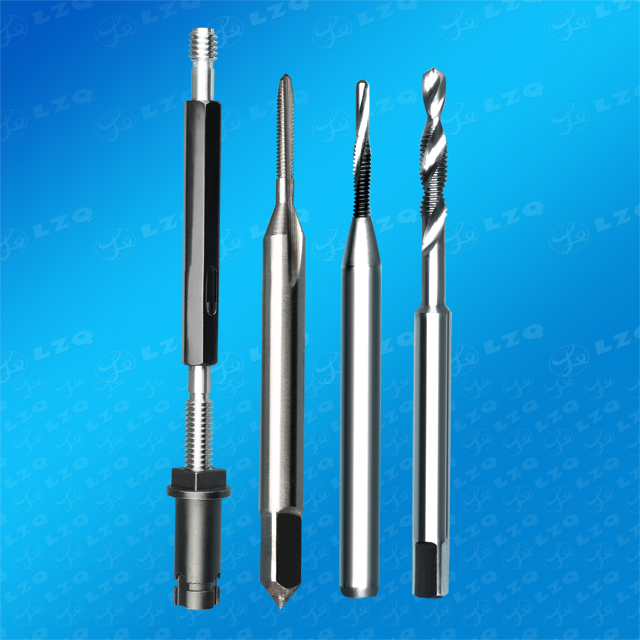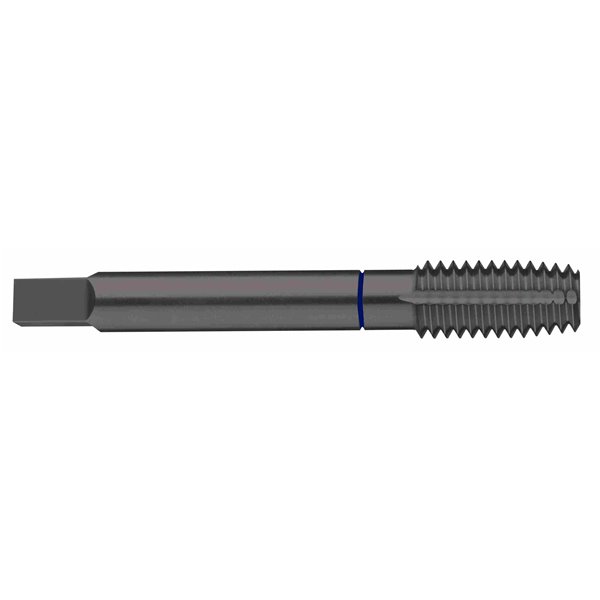
Typically, this type of tap has a shallower flute passage than conventional taps. This feature, and the excellent shearing action of the flute, make spiral point taps ideal for production tapping of through holes. However, the spiral point tap has the cutting face of the first few threads cut at a predetermined angle relative to the tap’s axis angle to force the evacuation of chips ahead of the cutting action. Spiral point taps have the same general physical dimensions as standard straight flute taps. This allows the chips to be pulled slightly upward but does not weaken the cutting edge as much as higher spirals will.
#Thread forming taps for aluminum for free#
Spiral flutes 25° – 35° – Recommended for free machining, low or leaded steels, and free machining bronze or brasses.On larger taps, it allows for pitch relief to ease the cutting. They form a chip tight enough to easily evacuate. Spiral flutes 38° – 42° – Recommended for medium to high carbon steels or free machining stainless steels.If used in other materials, they will usually cause the chips to nest because the spiral is too fast and the chip area is too small for chips to form correctly. High spiral flutes 45° and higher – Effective for very ductile materials like aluminum and copper.Following are recommendations for degree of spiral for various materials: Commonly available in slow spiral (18-30° helix angle) or fast spiral (45-52° helix angle).

Spiral flutes are recommended when bridging a gap inside the hole such as a keyway or cross-hole. The spiral fluting feature aids in evacuating chips out of the tapped hole. Spiral flute taps feature spiral flute designs rather than conventional straight flutes. It is commonly used in smaller shops that prefer “one tap fits all” approach. A straight flute tap can be used in through or blind holes. It can be especially beneficial when cutting short chipping material such as cast iron. The straight flute is the standard style of tap, designed for a range of different tapping applications. We hope you find this blog helpful! Please leave a comment below or contact us if you have any questions or feedback. If you aren’t paying attention to where your chips are flowing, you run the risk of breaking taps and eating your profit away with them. We are focusing in on selecting the proper flute geometry and what to do with the chip on different applications.

There are so many different things to look at when selecting the proper tap such as material, volume of holes, coolant supply, rigid or floating holders, as well as the tap material, coating, geometry, etc. We wrote this article as an introductory guide to help with tap selection of proper flute geometry. You would be surprised how often this happens throughout the course of a year and how much it eats into your profits.Īt Triumph Tool, we believe in the importance of offering superior technical support and customer service to our clients.

More E fficient P roduction - Longer tap life, less tap breakage, and faster tapping speeds combine to reduce cycle time and machine downtime.Have you ever had a tap break while you’re on the finishing features of a component that has taken hours on the machines to process? At that moment your frustration rises, your machine stops, and you start to lose profitability with every minute that passes.L onger T ap L ife - Forming taps last 3 to 20 times longer than cutting taps because they have no cutting edge to dull.Stronger T ap - The absence of chips eliminates the need for flutes, resulting in a solid, stronger tap.Because no metal is cut away, the possibility of producing oversized threads is greatly reduc B etter T hread G aging - Forming taps rearrange the metal in the hole to create the thread.This is especially true for materials that work-harden such as steel and stainless steel. Stronger T hread s - The grain flow of formed threads follows the contour of the thread resulting in greater thread strength.Chiple ss T apping - Since the thread is formed and not cut, there are no chips to interfere with the tapping process or to cause chip-removal problems in blind holes.The way they produce threads is completely different:

Forming taps and cutting taps produce threads that gage identically and are interchangeable, but the similarity stops there.


 0 kommentar(er)
0 kommentar(er)
